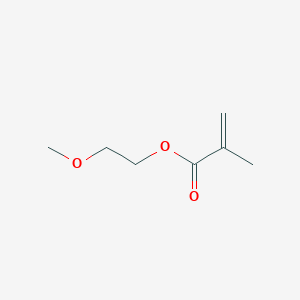-
Categories
-
Pharmaceutical Intermediates
-
Active Pharmaceutical Ingredients
-
Food Additives
- Industrial Coatings
- Agrochemicals
- Dyes and Pigments
- Surfactant
- Flavors and Fragrances
- Chemical Reagents
- Catalyst and Auxiliary
- Natural Products
- Inorganic Chemistry
-
Organic Chemistry
-
Biochemical Engineering
- Analytical Chemistry
- Cosmetic Ingredient
-
Pharmaceutical Intermediates
Promotion
ECHEMI Mall
Wholesale
Weekly Price
Exhibition
News
-
Trade Service
[ Focus on Chemical Machinery and Equipment Network ] Recently, the research team of Shandong University obtained physical evidence from tea samples unearthed from the Warring States Tomb No.
1 at the Xigang Cemetery Site of the Ancient City of Luguo, Zoucheng City, Shandong Province, and traced the origin of Chinese tea culture back 300 Early to the early stage of the Warring States Period
.
Relevant research results "Analysis of Tea Remains in the Tomb of Warring States Period No.
1 in Xigang Cemetery, Ancient City of Lu Kingdom, Zoucheng, Shandong" were published in the academic journal Archaeology and Cultural Relics, Issue 5, 2021
.
Chemical machinery and equipment network hotspots pay attention to chemical machinery and equipment1 at the Xigang Cemetery Site of the Ancient City of Luguo, Zoucheng City, Shandong Province, and traced the origin of Chinese tea culture back 300 Early to the early stage of the Warring States Period
.
Relevant research results "Analysis of Tea Remains in the Tomb of Warring States Period No.
1 in Xigang Cemetery, Ancient City of Lu Kingdom, Zoucheng, Shandong" were published in the academic journal Archaeology and Cultural Relics, Issue 5, 2021
.
Tea culture is an important part of Chinese culture.
It is not only the daily life of ordinary people "chai, rice, oil, salt, sauce and vinegar tea", but also carries the spiritual pursuit of "calligraphy, calligraphy, piano, chess, poetry, wine and tea" of literati and ink artists
.
"The Classic of Tea" written by Lu Yu of the Tang Dynasty records that "tea is for drinking, originated from the Shennong clan, and heard by Lu Zhougong".
The discovery of tea by Shennong is also the most extensive legend of the origin of tea culture
.
However, there are still many questions about the origin of tea culture
.
It is not only the daily life of ordinary people "chai, rice, oil, salt, sauce and vinegar tea", but also carries the spiritual pursuit of "calligraphy, calligraphy, piano, chess, poetry, wine and tea" of literati and ink artists
.
"The Classic of Tea" written by Lu Yu of the Tang Dynasty records that "tea is for drinking, originated from the Shennong clan, and heard by Lu Zhougong".
The discovery of tea by Shennong is also the most extensive legend of the origin of tea culture
.
However, there are still many questions about the origin of tea culture
.
Although our country is rich in ancient documents of tea culture, there are few reliable documents related to tea before the Han Dynasty, and there is no clear record of the origin of tea
.
There is also very little direct archaeological evidence for the ancients to drink tea.
The more definite archaeological findings come from the burial objects of the ancient tombs of Xi'an in the Western Han Dynasty and the ancient tombs of Ali in Tibet
.
The tea objects unearthed in Yangling Mausoleum of Emperor Jing of the Western Han Dynasty are the earliest archeological evidence of the age before the Warring States Tomb No.
1 in Xigang Cemetery
.
.
There is also very little direct archaeological evidence for the ancients to drink tea.
The more definite archaeological findings come from the burial objects of the ancient tombs of Xi'an in the Western Han Dynasty and the ancient tombs of Ali in Tibet
.
The tea objects unearthed in Yangling Mausoleum of Emperor Jing of the Western Han Dynasty are the earliest archeological evidence of the age before the Warring States Tomb No.
1 in Xigang Cemetery
.
In 2018, the archaeological team of the Ruins of the Ancient City of Shandong University found residues of stem and leaf-like plants in the original porcelain bowl in Tomb No.
1 of Xigang Cemetery
.
The archaeological team restored the discovered bowl body and soil samples to their original state as a whole package and extracted them, and conducted laboratory testing and analysis in cooperation with relevant professional researchers from the University of Science and Technology Beijing
.
Finally, it was confirmed that the tea samples unearthed from the original porcelain bowls were the tea dregs left by the ancients after boiling (soaking) them
.
This discovery traces the physical evidence of the origin of tea culture to the early stage of the Warring States period, that is, from 453 to 410 BC, more than 300 years earlier
.
1 of Xigang Cemetery
.
The archaeological team restored the discovered bowl body and soil samples to their original state as a whole package and extracted them, and conducted laboratory testing and analysis in cooperation with relevant professional researchers from the University of Science and Technology Beijing
.
Finally, it was confirmed that the tea samples unearthed from the original porcelain bowls were the tea dregs left by the ancients after boiling (soaking) them
.
This discovery traces the physical evidence of the origin of tea culture to the early stage of the Warring States period, that is, from 453 to 410 BC, more than 300 years earlier
.
When detecting and analyzing the unearthed samples, the research team used a variety of analytical methods, including Fourier transform infrared spectroscopy (FTIR), gas chromatography mass spectrometry (GC/MS), and thermally assisted hydrolysis methylation pyrolysis gas chromatography mass spectrometry (THM-Py-GC).
/MS) and other techniques to compare the differences between the unearthed samples and the tea leaves before brewing and the tea residues after brewing
.
/MS) and other techniques to compare the differences between the unearthed samples and the tea leaves before brewing and the tea residues after brewing
.
Fourier transform infrared spectroscopy and gas chromatography mass spectrometry are commonly used analytical methods for qualitative and quantitative detection of the chemical composition of samples
.
Thermally assisted hydrolysis methylation pyrolysis gas chromatography mass spectrometry (THM-Py-GC/MS) is a technique that has been gradually applied to the analysis of organic materials in recent years.
It is often used in the detection of raw lacquer, painted pigments and other materials in archaeology
.
Gas chromatography mass spectrometry combined with thermal pyrolysis, replacing traditional sample pretreatment with high temperature decomposition, can retain more mixture sample components
.
THM-Py-GC/MS commonly uses tetramethylammonium hydroxide (TMAH) as a methylation reagent to convert fatty acids and alcohols into corresponding methyl esters and methyl ethers to separate and determine the components of the sample
.
THM-Py-GC/MS is playing an increasingly important role in the analysis of unearthed organic residues, especially animal fat types
.
.
Thermally assisted hydrolysis methylation pyrolysis gas chromatography mass spectrometry (THM-Py-GC/MS) is a technique that has been gradually applied to the analysis of organic materials in recent years.
It is often used in the detection of raw lacquer, painted pigments and other materials in archaeology
.
Gas chromatography mass spectrometry combined with thermal pyrolysis, replacing traditional sample pretreatment with high temperature decomposition, can retain more mixture sample components
.
THM-Py-GC/MS commonly uses tetramethylammonium hydroxide (TMAH) as a methylation reagent to convert fatty acids and alcohols into corresponding methyl esters and methyl ethers to separate and determine the components of the sample
.
THM-Py-GC/MS is playing an increasingly important role in the analysis of unearthed organic residues, especially animal fat types
.
In archaeological research, analytical instruments have become indispensable tools and have more and more applications
.
For example, the use of accelerator mass spectrometry (AMS) technology for carbon fourteen dating; the use of analysis techniques such as mass spectrometry and chromatography to detect the composition of unearthed organics, so as to study ancient eating habits, food processing methods, etc.
; use Raman spectroscopy, X-ray fluorescence spectroscopy, etc.
way to detect mural paint, painting technology research and other ancients
.
With the development of technology and the application of more instruments and techniques, archaeologists can obtain more information from unearthed cultural relics, and we can also get closer to the real history
.
Analytical Instruments .
For example, the use of accelerator mass spectrometry (AMS) technology for carbon fourteen dating; the use of analysis techniques such as mass spectrometry and chromatography to detect the composition of unearthed organics, so as to study ancient eating habits, food processing methods, etc.
; use Raman spectroscopy, X-ray fluorescence spectroscopy, etc.
way to detect mural paint, painting technology research and other ancients
.
With the development of technology and the application of more instruments and techniques, archaeologists can obtain more information from unearthed cultural relics, and we can also get closer to the real history
.
Original title: A variety of instruments help advance the physical evidence of the origin of tea culture for 300 years







